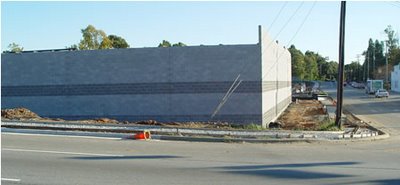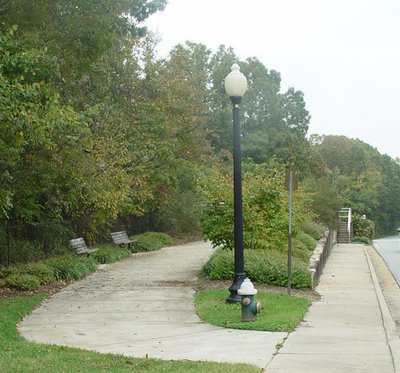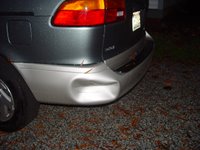During the baseball debates of 2003, you, collectively, were of the opinion that WMS should be and would be taken care of once the new downtown stadium was built. You, collectively, supported the new stadium factions who said the old stadium will be preserved and improved to become “N.C.’s premier amateur baseball venue” and intimated that opinions and fears to the contrary were unfounded.Allen has now responded on his own blog.
Now, after a group of citizens (from both sides of the 2003 stadium debate) got together at the behest of city council and developed a renovation plan for WMS and got the measure placed on the ballot, you are urging voters to reject the measure.
What changed your minds?
He notes that in a May 7, 2006, editorial, the N&R sort of endorsed the $5.5 million bond proposal with the words, "if the stadium is worth renovating, it's worth doing right," followed by, "as for the bigger question of whether the stadium ultimately deserves voter approval, it's premature to say right now."
I guess that adds up to, "You can't tag us for changing our mind, because we really hadn't made it up before, because even though we said the renovation should be on a bond referendum, we never said we would actually endorse the bond."
I'm going to resist the temptation to mock that kind of vacillation, and move on to more substantive issues.
Allen asks what happened to the idea of using federal tax credits. Too bad he didn't ask sooner. He would have found out that that idea had been thoroughly explored by the city, and is a non-starter. The dollars just aren't there.
Allen also seems unaware of the amount of citizen effort and city expense that went into the current bond proposal.
Former city manager Ed Kitchen assembled a task force of citizens and city staff who met frequently over a period of about two years. I was a member: we solicited public opinion and produced a recommendation for the best uses of the stadium. Then we vetted, interviewed, hired, and worked closely with an architectural consulting firm to come up with three scenarios for renovation. It was a toilsome process. I don't know how much the architects were paid, but I don't think they worked cheap.
In sum, the current proposal is the result of a planned, concerted, comprehensive, and strenuous effort by the city and by Greensboro citizens, one that the consultants involved, and the state and national preservation community, saw as an extraordinary example of citizen advocacy. It is extremely unlikely that it will be repeated.
There will be no other such initiatives to save this last-surviving world war memorial.
Back in 2003, when the city was openly debating whether to renovate WWMS or to build a new stadium, the N&R rather condescendingly scolded those of us who thought that the survival of the war memorial was at stake, and assured us that its future was secure.
Thus I find it personally galling that, when a modicum of grit was required to back up that assertion, to help make it come true, the N&R not only shilly-shallied, but now trots out a tired nostrum in its defense: "sometimes you have to make tough choices."
Not persuasive, Allen, to say the least. You didn't do your homework on this one, and you made a bad call.
I'd like to mention the names of some people who worked very hard to bring this bond issue forward, but who are not publicity seekers: Greg Woodard of the VFW, Benjamin Briggs of Preservation Greensboro, Marc Bush of the Greensboro Sports Commission, Willie Brown of NCA&T University, Kim Strable of Greensboro College, and Betsey Baun and Tracy Lamothe from Aycock. Most of them never missed a meeting and showed up on time. These people -- along Mark Bush, John Hughes, Stefan-leih Geary, Butch Schumate, Bob Morgan, and Richard Wagner, of the city of Greensboro, and Rence Callahan and Steve Barnes of WRCP -- did a tremendous amount of grunt work to bring forward the bond proposal, even though you haven't heard their names.
I've never worked with a nicer group of people.








